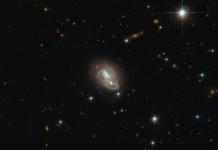Scientist across the globe believe that the Mars once supported life before becoming the barren and deserted land of today. A team of researchers from the University of Colorado Boulder was analysing the conditions and circumstances that changed the climatic conditions of the red planet.
According to study authors, Mars was a barren land like today, but something strange happened nearly four billion years ago that made the red planet conducive and suitable for supporting life.
Lead study author Dr. Stephen Mojzsis explained that bombardment of comets and asteroids on Mars must have changed the atmosphere and climatic conditions of the red planet that made it warm, brought water and adequate air composition so that the Mars can harbor life. However, there isn’t any solid evidence to tell whether the red planet actually supported life once.
While explaining about the asteroid-Mars collision, Mojzsis said that the impacts were so severe that they would have created regional hydrothermal systems on Mars in which microbes can survive. He further added that the some microbes can survive in very harsh climatic condition including hot springs and acidic water, thus those microbes would also have thrived on the red planet.
Recent images captured by the Mars probe like Curiosity shows marks of river valleys, deltas and parts of lake beds, which further strengthens the theory of presence of life on Mars in the past.
In addition, the collision also changed the atmospheric pressure, climate cycle and heated up the Mars that would have further initiated the dormant water cycle.
For the study, scientists also used computer-based models to demonstrate the effect of asteroid and comet collision and how it changed the course of the planet. It was revealed that the Mars once hosted life but somehow it became the deserted place of today. Further analysis will help scientists in predicting the future of Earth.
The study appeared in the journal Earth and Planetary Science Letters.


